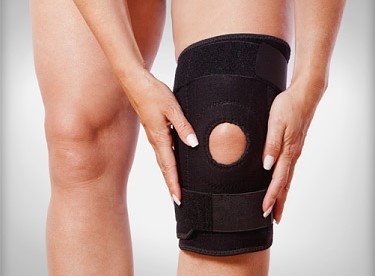As the largest joints in the body, your knees are generally complex. They have to be stable and strong to carry your body weight while at the same time being flexible to allow fluid body movement. This range of motion is made possible by the intricate web of ligaments, tendons, and muscles that surround and fortify the knees. Injury to these structures can greatly diminish your knees’ ability to carry out their function.
Knee ligament injuries can result from overstretching and tearing secondary to overuse or trauma. There are four main types of knee ligament injuries:
Medial Collateral Ligament Injury (MCL Injury)
Your medial collateral ligament is located in the inner part of your knee and it prevents your knee from bending inward too much. MCL injuries account for 7.9 percent of all knee injuries, making it the most common type of knee ligament injury.
A forceful blow to the side of the knee can damage your MCL, leading to bruising and stiffness around the knee area. Another common cause of MCL injuries includes playing contact sports such as rugby, hockey, and football.
Anterior Cruciate Ligament (ACL) Injury
The anterior cruciate ligament runs diagonally in the middle of your knee and is responsible for keeping your shinbone in place. An ACL injury commonly occurs when playing sports that include sudden stops, twisting movements, and change in directions such as tennis, volleyball, basketball, and football.
It has been shown that more women suffer from ACL injuries than men who play the same sports because they often have weaker quadriceps and hamstring muscles.
Posterior Collateral Ligament (PCL) Injury
Your posterior cruciate ligament works together with your ACL. It is located at the back of your knee and is responsible for preventing your shinbone from sliding back too far.
A PCL injury is less common than an ACL injury. It usually occurs when your bent knee hits a hard surface. Knee hyperextension and twisting can also lead to a PCL injury. Based on a study, 40 percent of PCL injuries are attributed to sports accidents.
Lateral Collateral Ligament (LCL) Injury
Your lateral collateral ligament is located outside the knee and is responsible for preventing your knee from bending outward too much. LCL injuries usually occur when you land incorrectly after a jump, when you twist your knee, and when you do a sudden, sharp change of direction.
Signs and Symptoms of a Knee Ligament Injury
Popping sound. At the time of injury, you may hear or feel a popping or a snapping sound in your knee, indicating a tear in your ligament.
Swelling. Inflammation and swelling occur immediately if the ligament is completely torn. For a minor ligament sprain, swelling may occur after several hours.
Pain. Pain generally worsens with movement but the severity varies depending on the extent of the knee injury.
Limited movement. In a completely torn ligament, knee movement and range of motion are greatly reduced. You might even notice that your knee is unstable and incapable of supporting your weight.
Treatment of Knee Ligament Injury
A mild injury may heal on its own over time. Severe cases, however, might require surgical repair. Here are some tips to help facilitate recovery:
-
Rest your injured knee for about 48-72 hours. You can use crutches or other mobility aids to help take the weight off your injured knee.
-
Apply an ice pack to the injured area to reduce swelling and alleviate pain. Do this for about 15-20 minutes every few hours especially during the first 3 days following your injury.
-
Wrap your knee with an elastic bandage to immobilize it, provide additional support, and prevent further swelling.
-
Incorporate good sources of protein and vitamin C into your diet to facilitate tissue repair and boost your immune system.
-
Take painkillers to relieve your pain.
-
Wear a knee brace as recommended by your doctor.
-
Regularly attend your physical therapy sessions.
Knee ligament injuries may limit your quality of life for a period of time. To prevent them, do strengthening exercises that target the knees to make them strong enough to withstand strong impact. Don’t forget to wear protective gear as well (when applicable) and condition your body before playing any form of contact sports.




